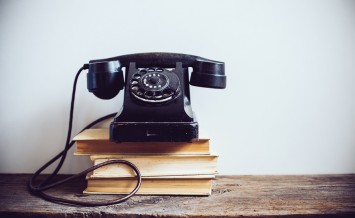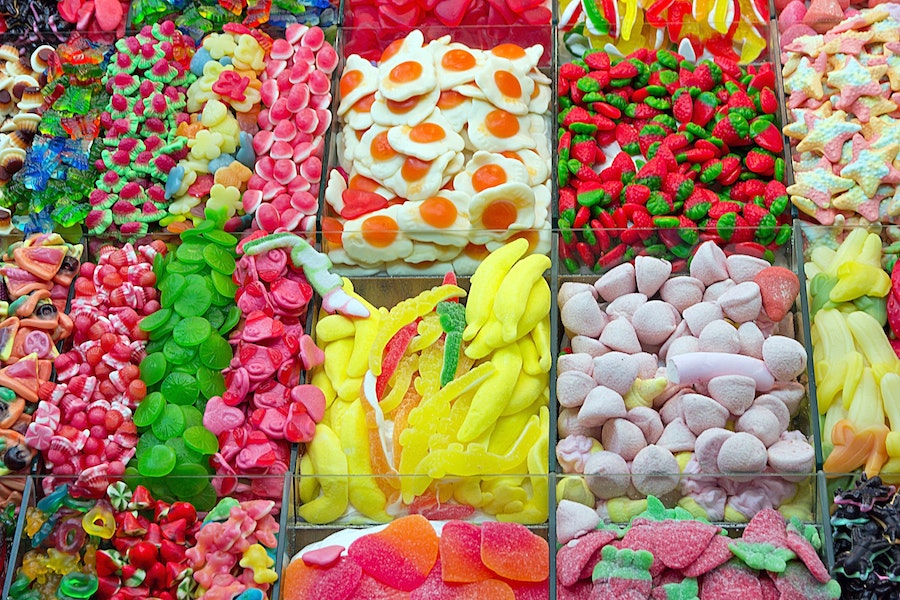Confectionery through the ages
Ella Walker takes a look back at our obsession with candy over the years – from boiled sweets to Flying Saucers
There’s just something about tearing open the foil on a packet of Refreshers, or slotting a Sherbet Lemon between your back teeth and letting it dissolve until you hit the fizzy centre.
Whether you’re a Rhubarb and Custards fan, a Jelly Baby aficionado, or a Tutti Frutti devotee, there’s a candy out there for every sweet tooth. However, while retro sweets and old-fashioned confectioners are de rigueur these days, how much do you really know about the evolution of the modern day bonbon industry? It turns out, even our cavemen ancestors craved something syrupy – they’d mix together honey and nuts – while boiled sugar became popular in medieval times, and the Tudors couldn’t scoff enough sugared almonds. From the 1700s onwards, hard candies and boiled sweets, many still recognisable today, were sold as medicinal cough drops by apothecaries. Pillowy bites of pink Turkish Delight were also invented – in Turkey of course – during the 1700s, almost 200 years before Edmund was fed them by C. S Lewis’ White Witch in The Lion, The Witch And The Wardrobe. 1800s and early-1900s

The Rowntree family, 1923
From the mid-1800s though, clever folk began to realise they could transcend the ordinariness of boiled sugar sweets and traditional hard candies by adding milk and fat. Before long, this creamy, chewy invention became known as caramel, and although in recent years we’ve more often than not added salt, it really hasn’t changed much since. Chewiness, in general, became more desirable, and the Rowntree family introduced the world to both Fruit Pastilles (1881) and Fruit Gums (1893), ensuring a legacy of children endlessly fighting over who gets the purple ones in the process.

Marie Osmond with her brother Donny relaxing with candy floss at a London garden party in 1975
By 1904, science helped make sugary dreams come true when, ironically, a dentist and confectioner teamed up and invented candy floss. The whipped sugar and air concoction was displayed at that year’s World Fair – and has featured at practically every fete, fair and festival ever since. The same decade saw lollipops as we recognise them today introduced in 1908, although we’d have to wait another 40 years for the Drumstick, and watermelon Melody Pops were, at that point, just sheer fantasy. 1920s
The 1920s brought us some absolute classics, and that’s aside from the Charleston and flapper dresses. It was the decade that gave us Barratt’s Sherbet Fountain – oh the mess and fiddliness of that liquorice ‘straw’ – as well as Sherbet Lemons, while Nineties kids will be surprised to learn that Black Jacks and Fruit Salads actually launched during the 1920s too. 1930s

London schoolboys scrambling for sweets after sweets rationing ended in 1953
Boiled sweets – think Rhubarb and Custards, Pear Drops and Barley Sugars – were popular during the Thirties, although sugar rationing was a limiting factor. Although, this didn’t stop the advent of white, chalky Extra Strong Mints or the instantly iconic bright blue and yellow Refreshers bar, courtesy of Swizzles in 1935. Had it not been for World War II, we’d have also been popping Polos since 1939, but we didn’t get to treat ourselves to the holey mints until 1948. 1940s and 50s

Parma Violets became a hit in the 1940s, along with Drumsticks and Love Hearts in the 50s
Despite rationing continuing until 1953, confectioners continued to ply us with brand new sugary treats. We can thank the 1940s for the creation of Parma Violets – those weirdly flowery, bitter sweets, that sit oddly on the tip of your tongue – and the Dip Dab, that delightful sachet of powdered sugar and a sticky red lolly. The 1950s only got better, with Love Hearts and Drumsticks also hitting shelves. 1960s and 70s

Flying Saucers
Inevitably, it was only a matter of time before the Dip Dab faced a rival. Confectioners Swizzels Matlow introduced the Double Dip in the Sixties, offering two pouches of sherbet powders (an orange and a cherry flavoured one, if you too could never quite distinguish what they were meant to be). The Double Dip actually reached its peak in the Nineties, and meanwhile the Space Race had more benefits than just putting man on the moon – it sent Flying Saucers (more sherbet, this time encased in colourful rice paper cases) stratospheric. 1980s and 1990s
Many children of the Eighties will recall knocking back handfuls of Rainbow Drops – those cardboardy flavoured puffed rice and maize – but they were actually invented prior to WWII. However, one candy that both defines an era and was a bona fide product of it, was the sweet and sour Wham Bar, released in 1985. Anyone else pop them in the sun to go stretchy and melty, or was that just us?

Big Breakfast presenter Denise Van Outen officially unwrapped Opal Fruits’ new name Starburst in 1998
By the 1990s, corner shops across Britain were dealing heavily in coppers, thanks to the fashion for spending pocket money on handfuls of penny sweets. It seems unfathomable today that you could get 10 sweets, pick ‘n’ mix style, for 10p, but back then you really could. And if you weren’t preoccupied with nabbing another Fried Egg or splashing out on a Fizzy Strawberry Belt (a hefty 5p), you’d have been busy debating the travesty that was Opal Fruits’ (invented in the 1960s) name change to Starburst. We’re still not over it…
The Press Association
Latest posts by The Press Association (see all)
- Beatles documentary Let It Be to be released on Disney+ - April 16, 2024
- How to keep your money safe – as criminals ramp up AI tactics to steal consumer data - April 16, 2024
- Seasoned marathon runners give their best race day tips for first-timers - April 16, 2024
- What are heat pumps and could they help your home save energy? - April 15, 2024
- Trailer for Bridgerton season three teases new friends-to-lovers romance - April 12, 2024





















